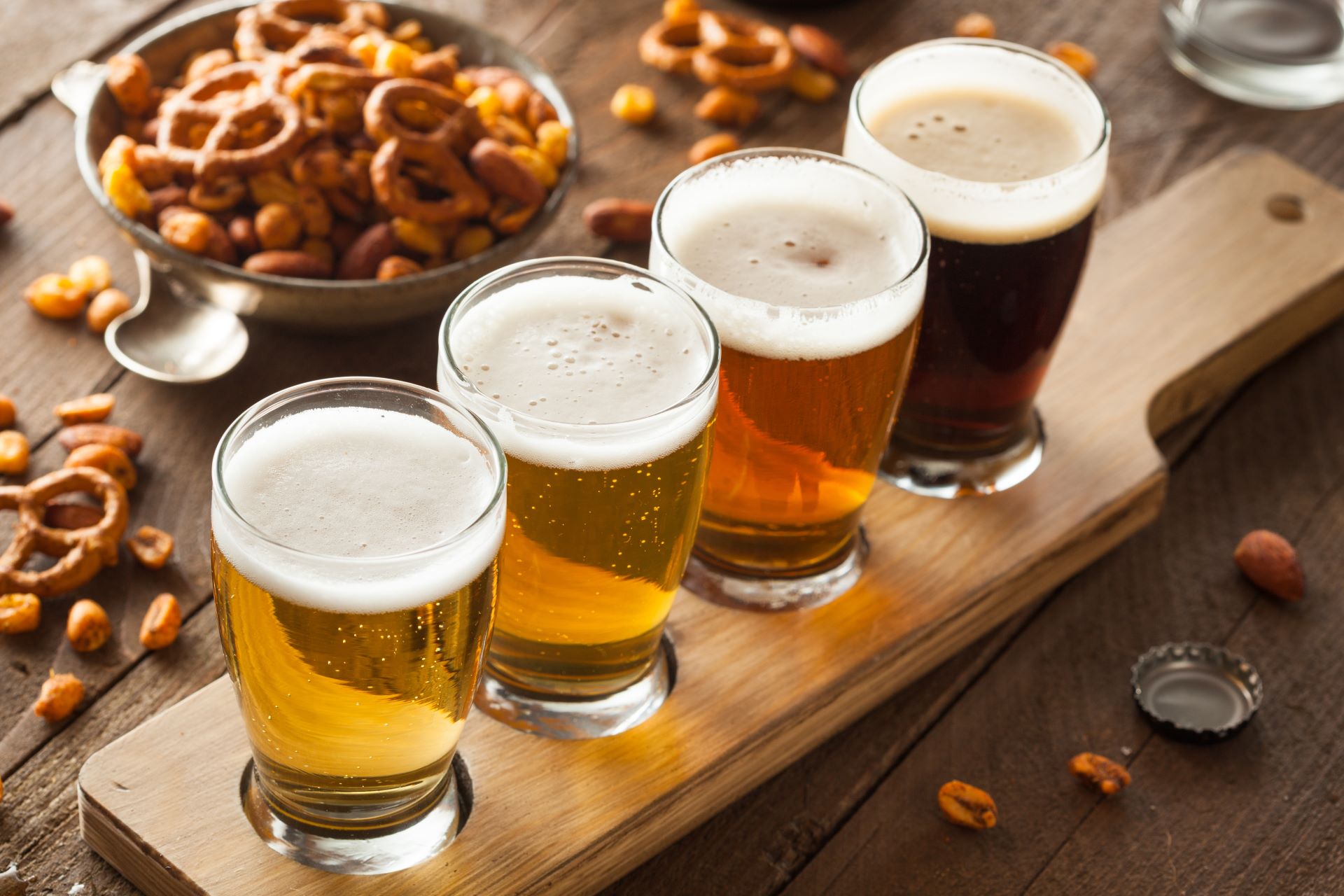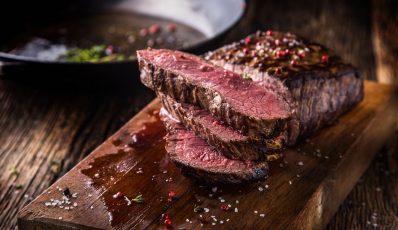Have you ever wondered how to enhance the tasting experience of your favorite beer? Personalizing the taste of beer by adding your own spice mixtures is becoming more and more popular among enthusiasts of this golden drink. In this article, we will guide you through the process of creating the perfect combinations of beer spices that will enrich its taste - from a refreshing lager to an intense stout. You will learn what spices best complement different styles of beer and how to create a seasoning mix that will delight your senses.

Have you ever wondered how to enhance the tasting experience of your favorite beer? Personalizing the taste of beer by adding your own spice mixtures is becoming more and more popular among enthusiasts of this golden drink. In this article, we will guide you through the process of creating the perfect combinations of beer spices that will enrich its taste – from a refreshing lager to an intense stout. You will learn what spices best complement different styles of beer and how to create a seasoning mix that will delight your senses.
The art of beer seasoning
Seasoning beer requires understanding how different ingredients affect its flavor and aroma. Traditionally, most beers are based mainly on hops, malt, yeast and water. However, adding spices can enrich the palette of flavors and add a unique character to the beer.
Why is the beer seasoned?
Spices in beer are nothing new; historically, they were used before hops became the dominant flavoring agent. Today, adding spices to beer is used not only to highlight or balance the natural flavors of hops and malt but also to explore new, surprising flavor profiles. Spices can enhance the lightness of beer, add warmth, freshness, and even an exotic dimension.
Popular beer spices
Citrus zest – Orange, lemon, lime, or grapefruit zest adds a fresh, citrus note to the beer, perfect for refreshing summer beers.
Coriander – Popular in Belgian Witbier, it adds subtle spicy and citrus notes that perfectly complement the light and fruity profiles.
Ginger – Adds a warm, spicy note. Used moderately, it imparts a subtle flavor, and in larger amounts, it can give the beer a pleasant warming effect.
Anise – Gives sweet, herbal notes, perfect for dark and full-bodied beers such as Porters and Stouts.
Cloves – Their intense, spicy flavor goes well with dark, rich beers, especially in winter.
Cinnamon – Often added to seasonal beers, it adds warmth and spicy notes, especially popular in holiday beers.
Cardamom – Supplements the beer with spicy and citrus notes, often used in Scandinavian and Belgian beers.
Nutmeg – Adds a delicate, warm, and sweet note, perfect for dark, rich beers.
Pepper – Black or white, adds a spicier character and can be used to emphasize the character of stronger, more aromatic beers.
Wild Rose – The flowers of this plant can add delicate, floral notes, great for light, fruity ales.
Lychee – Lychee fruit can be used to create sweet, tropical notes, especially interesting when paired with light, fruity beers.
Safe use of spices in beer
It is also crucial to use spices in a safe and hygienic form. All spices should be well-dried or pasteurized to avoid introducing unwanted microorganisms into the beer. Spices are often added in the last minutes of boiling the wort, which allows them to be disinfected with heat but does not precipitate too many volatile oils.
Understanding the basics of beer seasoning allows you to experiment and create truly unique beers. This is a great opportunity to discover new combinations and enrich your brewing portfolio.
How to balance the taste of beer with spices?
Balancing the taste of beer with spices requires careful selection and use of additives. The basic step is to understand what flavor properties each spice brings and how they can complement or contrast the dominant flavors in the beer. For example, beers with a distinct bitterness can gain flavor complexity by adding sweet spices, such as vanilla or cinnamon, to soften their sharpness. In turn, fresh herbs such as mint or basil are perfect for light, fruity beers, emphasizing their refreshing character.
Controlling the amount of spices used is also key. Too much can completely dominate the taste of the beer, so it is recommended to start with minimal amounts and gradually increase them until the desired effect is achieved. It is worth carrying out this process in stages, tasting the beer after adding each new portion of spice, to be able to continuously assess changes in the flavor profile.
The last but equally important issue is the moment of adding spices to the beer. Adding them at different stages of beer brewing – at the beginning, during, or at the end – may significantly differ in the final effect. Spices added at the beginning can produce a more subtle effect and become more integrated with the flavor of the beer, while those added at the end or after fermentation will have a stronger, more pronounced effect . Thanks to these techniques, you can achieve the perfect balance of beer flavor that will delight both novices and experienced brewing enthusiasts.
-
Fermentation Vessel – 30 L – integrated cooling coil 199.00 €
-
Brew Kettle – 30 L – 2,500 W – 25 – 100 °C – Stainless steel – Display – Timer
-
Conical Fermenter – 70 L – 0 – 40 °C – stainless steel – with insulating cover 299.00 €
-
Mash Tun – with insulation – 60 L – 3000 W – 10 – 100 °C – stainless steel – LCD display – timer
How to create your own beer spice blends?
Creating your own beer spice blend is an exciting way to personalize your favorite drink. Here’s step by step how you can do it:
Step 1: Selecting spices
Decide what flavors you want to enhance or add to your beer. You can choose from a wide range of spices, from citrus peel, through herbs, to spicy spices such as cinnamon or cloves. Remember that the spices should be fresh and of high quality, which directly affects the taste of the beer.
Step 2: Proportions
Start with small amounts, especially if you’re experimenting with new flavors. We recommend starting with about 1 gram of spice per 10 liters of beer. You can gradually increase the amount, testing the mixture on a smaller scale to find the perfect ratio.
Step 3: Testing
Before adding spices to an entire batch of beer, test the mixture on a small sample. This gives you the opportunity to assess how the spices affect the taste and whether they are too dominant.
Step 4: Disinfection of spices
To avoid contamination of beer, spices should be properly prepared. The dry mix can be sanitized by blanching (immersion in hot water) or by adding it to the hot wort a few minutes before the boil is finished.
Step 5: Adding to beer
It is best to add spices at the end of wort boiling or during fermentation to minimize the loss of volatile aromas. Spices can also be placed in a filter bag, which will make it easier to remove them from the finished product.
Step 6: Fermentation and evaluation
After adding the spices, allow the beer to go through the normal fermentation process. Once fermentation is complete, taste the beer to see if you are satisfied with the taste. If necessary, you can slightly adjust the taste by adding more spices.
What spices should you add to beer?
Here are some popular combinations that may inspire you to experiment with your own recipes:
Belgian Witbier blend
- Ingredients: Orange peel, coriander, coriander seeds.
- Characteristics: Slightly citrusy with herbal notes, perfect for light, refreshing beers.
Mixture for winter Ale-type beer
- Ingredients: Cinnamon, cloves, nutmeg, orange peel.
- Characteristics: Rich, spicy taste with a citrus note that goes perfectly with darker beers.
Mixture for Stouts and Porters
- Ingredients: Vanilla, cocoa, coffee, cinnamon.
- Characteristics: Deep, rich flavors that enhance dark beers.
Mixture for Saison beers
- Ingredients: Black pepper, lemon peel, ginger, rosemary.
- Characteristics: Herbal and spicy profile, with a distinct spiciness and a refreshing citrus note.
Blend for India Pale Ale (IPA)
- Ingredients: Grapefruit, orange peel, coriander, pine syrup.
- Characteristics: Distinct citrus and pine notes that enhance the hop character.
Blends for fruit beers
- Ingredients: Hibiscus flower, dried berries, cinnamon, citrus peel.
- Characteristics: Floral and fruity tones that perfectly complement the light, fruity Ale.
Experimenting with various spices and their combinations allows you to create beers with a unique character, tailored to individual preferences. Preparing your own mixture is also a great opportunity to delve into the world of brewing and discover new, exciting flavors.






Share